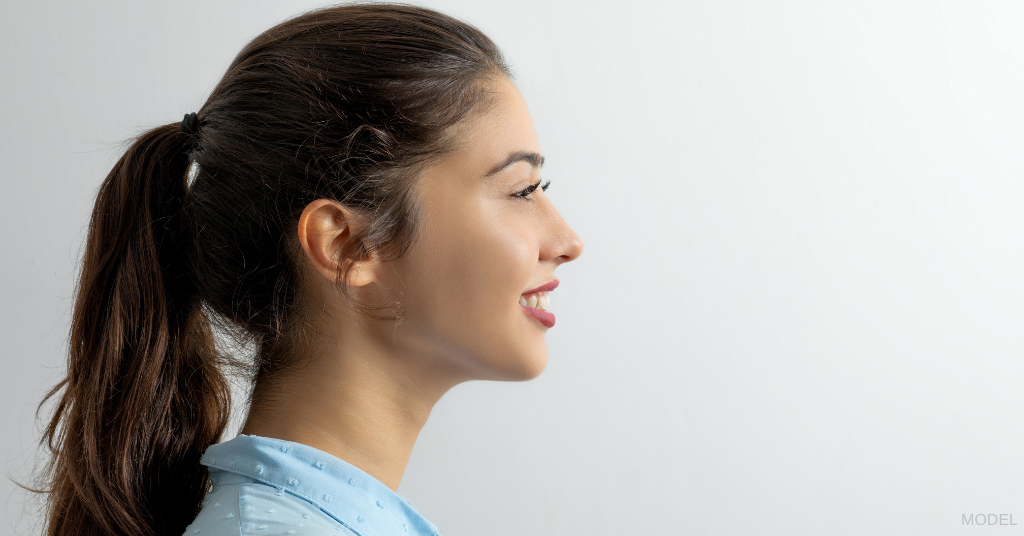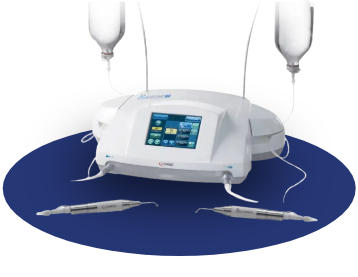Kent V. Hasen, MD, is pleased to announce that he offers ultrasonic or Piezo rhinoplasty. The Piezotome is an ultrasonic device that has different attachments to saw and shave the fine nasal bones with much more precision, reducing damage to the surrounding soft tissue of the nose and cheek.
Piezo Method Rhinoplasty vs. Traditional Rhinoplasty
Traditional rhinoplasty techniques employ a hammer and chisel to reshape the bones of the nose. This can lead to inadvertent damage, unintended fracture lines, and trauma to the delicate surrounding tissues. The Piezotome is designed to transmit ultrasonic energy directly to the bone without collateral damage to the surrounding soft tissue, limiting swelling and bruising.
Piezo Ultrasonic Rhinoplasty Gently Reshapes the Nose
Over the past decade, there has been a shift in the basic philosophy of rhinoplasty surgery. Preservation rhinoplasty techniques that reshape the nasal dorsum rather than destructively remove the nasal hump have gained traction in the rhinoplasty community. The Piezotome is a perfect instrument to help gently sculpt and reshape rather than destroy the nasal bridge in the preservation rhinoplasty technique.
Piezo Method Creates More Natural-Looking Results
The midvault of the nose does not need to be reconstructed as was necessary in traditional reduction rhinoplasty. This leads to a more stable and natural-appearing result. In many cases, the nasal bones can be reshaped without having to break the bone completely. Again, this leads to less swelling, bruising, and recovery time.
The American Society of Plastic Surgery explains more about how ultrasonic rhinoplasty differs from traditional nose job surgery in a helpful blog post.
Revolutionizing Rhinoplasty
Rhinoplasty using ultrasound technology changes the size or shape of the nose with less postoperative bruising and swelling. The FDA-approved Piezo ultrasonic rhinoplasty device cuts or removes nasal bone and cartilage with extreme precision, reducing trauma to adjacent tissue, blood vessels, and nerves.
Benefits of ultrasonic rhinoplasty include:
- Heightened surgical precision
- Minimized risk of complications associated with manual surgical tools
- Less postoperative bruising and swelling
- Faster recovery with less discomfort
- Results that look more natural
- Less chance of revision surgery
Embracing This Rhinoplasty Advancement
You may be asking yourself, why wouldn’t all rhinoplasty surgeons use the Piezotome instead of the rather crude hammer and chisel? The answer is that many surgeons are simply not familiar with this advanced instrument or are not willing to adapt their surgical technique to the trend of preservation rhinoplasty. Additionally, the Piezotome equipment is considerably more expensive than a hammer and chisel. However, Dr. Hasen feels that the added cost is well worth the results obtained from this gentler and more precise technique.
Can the Piezo Ultrasonic Rhinoplasty Device Reshape the Nose Tip?
As mentioned earlier, the Piezotome only cuts bone, not soft tissue like cartilage. Thus, if the tip needs reshaping as well, this is done with suture and cartilage graft techniques, not the Piezotome.
What Is Piezo Rhinoplasty Recovery Like?
At the end of the rhinoplasty, a nasal splint is placed to maintain the nasal bones in position during the initial healing phase. After 1 week, the splint and sutures are removed. Most patients are happy to discover that they have little to no bruising at this point. However, it should be remembered it will take about 1 year for the final outcome to be evident due to the healing required from all of the different structures altered during the rhinoplasty. Unfortunately, there is no way to speed up the final result. However, preservation techniques and the use of the Piezotome afford definite advantages in the early recovery period, which greatly enhance the quality of results obtained.
If you’re bothered by a nasal hump, a downturned tip, or other nose concerns, we’re happy to discuss your rhinoplasty options with you, including this exciting ultrasonic rhinoplasty advancement. You can see the type of results Dr. Hasen can achieve with various rhinoplasty methods by browsing through his patients’ before and after pictures. To learn more about how rhinoplasty can help you, please request a consultation or call us at (239) 262-5662 to schedule an appointment.



Leave a Reply